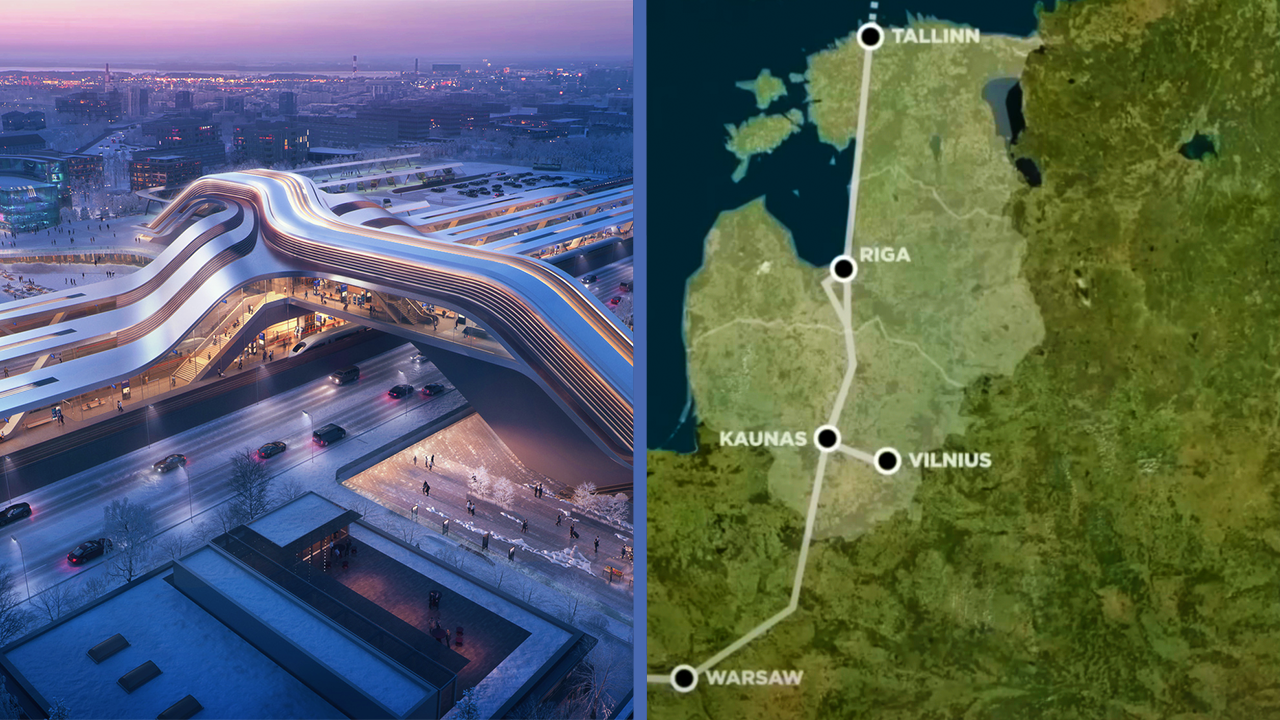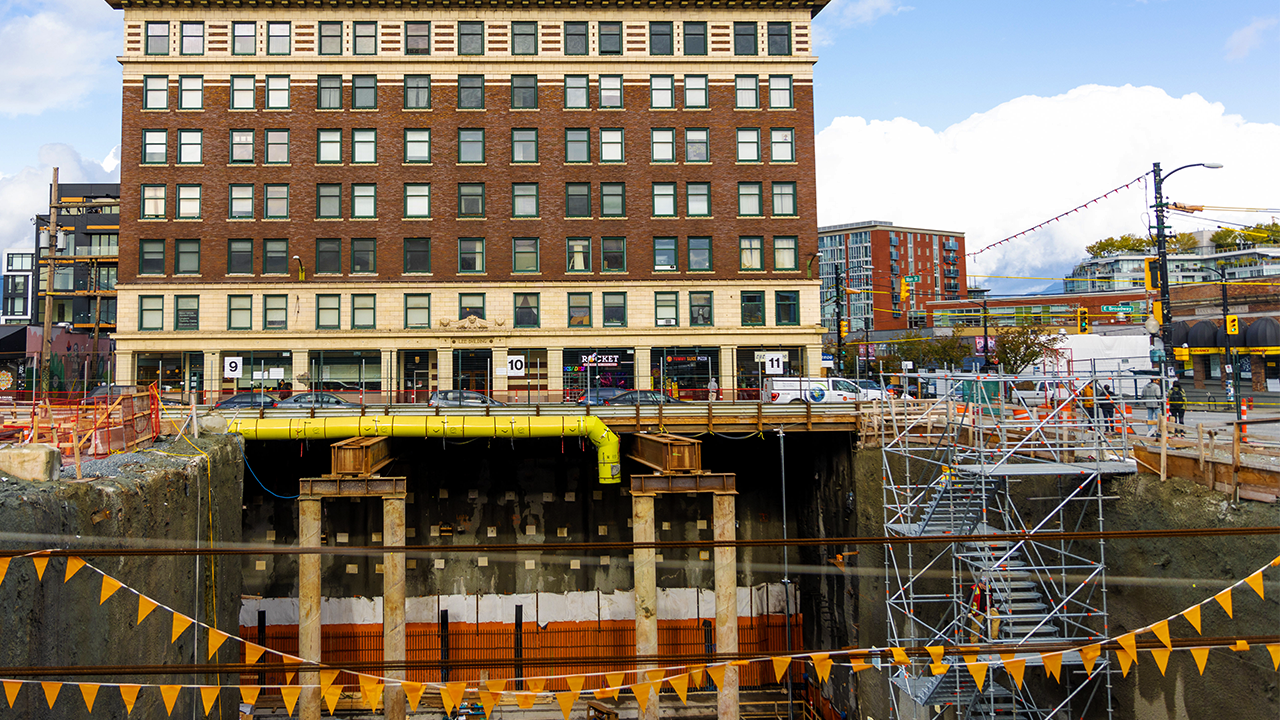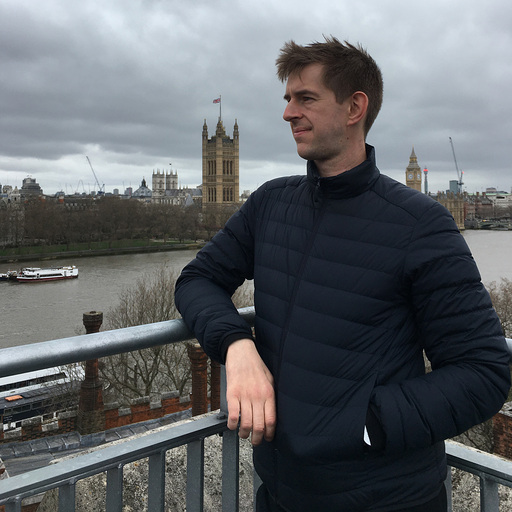The Race to Save the Panama Canal
- Youtube Views 2,038,891 VIDEO VIEWS
Video hosted by Fred Mills.
FOR SOMETHING that connects two of the world’s biggest oceans, the Panama Canal has a strange problem: It’s running out of water.
That’s a big deal, because every year billions of dollars of global trade and almost half of US sea freight passes through it.
The lack of water is reducing the number of ships which can pass through each day, and that’s creating an enormous traffic jam. If you’re the unlucky captain of one of these ships you have three options: take a very long detour, pay big bucks for priority passage, or join the back of the queue. Any one you choose is going to push up the price of whatever you’re carrying.
But why is this happening? The Panama canal is a triumph of engineering which helped launch the US as a global power over a century ago. But its ingenious design has also left it vulnerable to a very modern problem.
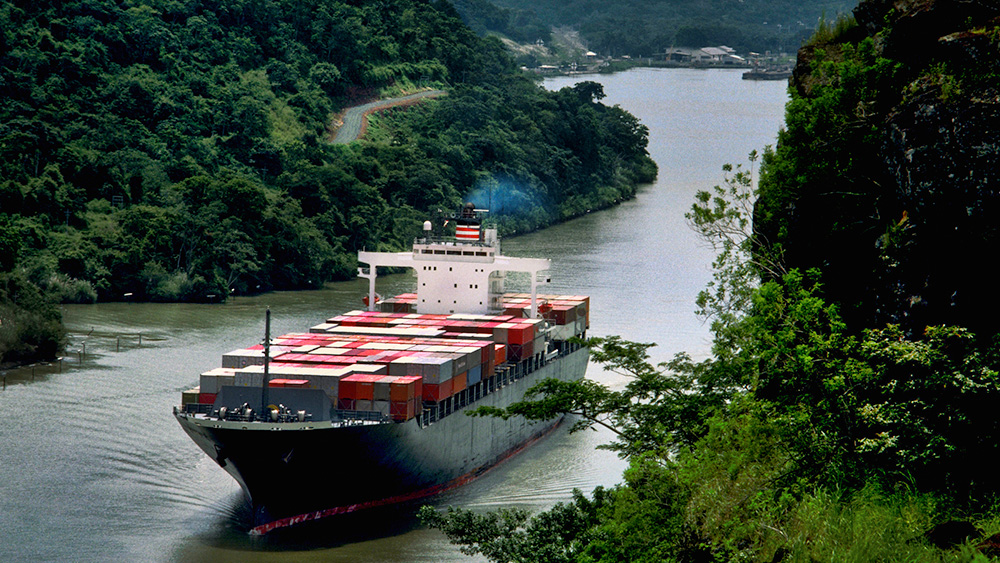
Above: A container ship sails through the Panama Canal.
Climate change has been reducing the rainfall the canal relies on for much of the last decade and it’s only getting worse. A plan is in place which could fix the problem, but will it be completed before the droughts derail the global supply chain and a huge part of Panama’s economy dries up?
If you look at a map, the isthmus of Panama seems the perfect place to build a canal. But the ground conditions mean building it was anything but straight forward.
Its ingenious design was only arrived at after a disastrous failed attempt which claimed the lives of tens of thousands of workers and destroyed the careers of two of France’s most famous engineers.
The canal as we see it today is the result of a US construction project which was completed in 1914. When it opened, it was seen as an incredible triumph for an emerging world power. Not only did it create a new shipping route across a continent, it also contained the largest dam and artificial lake in the world.
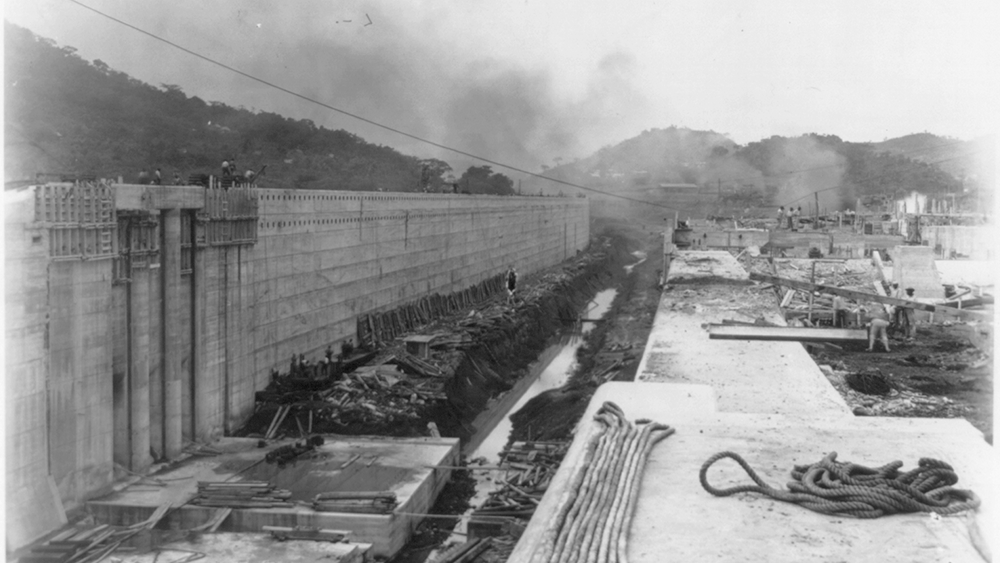
Above: The canal under construction in 1913.
Since its opening, the canal has been crucial to global trade. nn 2010, the one millionth ship passed through its locks. But since then, the canal has hit a number of problems. In 2015 massive drought caused the authorities to declare a state of emergency and limit the size of ships allowed to pass through it.
The series of locks at either end of the canal are crucial to its design but are also its achilles heel. It takes nearly 200 million litres of water to pass a ship through one of the locks, the newest of which are able to recapture up to 60 percent of that but the canal mainly relies on the rainy season between May and December to top up water levels.
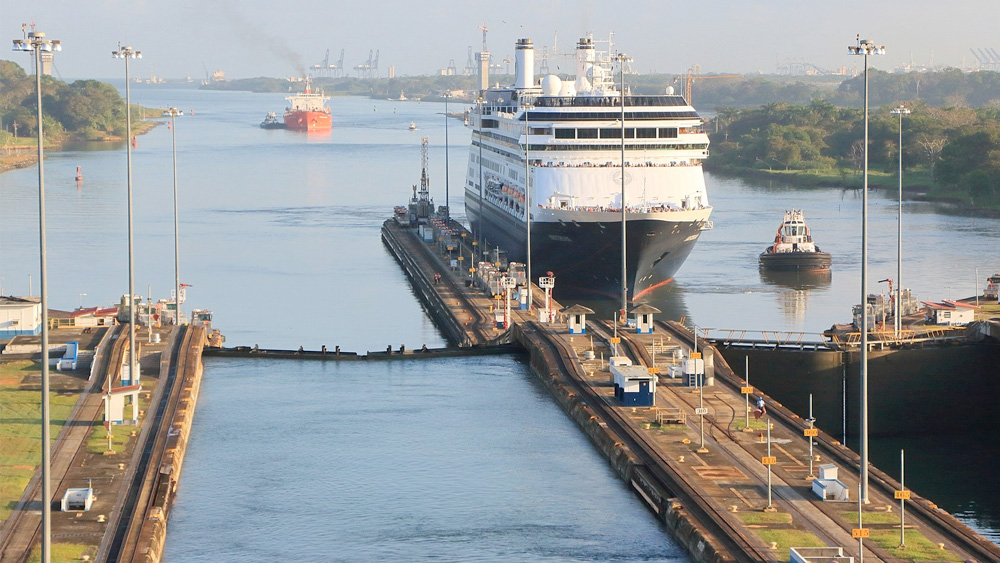
Above: A series of locks raises ships above sea level to pass through the canal.
2015 however saw the driest rainy season in over a century. This was caused by El Niño, a weather phenomenon which affects Central and South America, causing rain in some areas and droughts in others.
El Niños occur every few years, but climatologists claimed this one was particularly bad because of climate change and warned they would become more frequent and more severe in future … and that’s exactly what happened: in 2023 the canal saw the longest dry spell in its history.
Up to 40 ships are capable of crossing the passage every day, but in November last year that number was slashed to 24 and by February it’s likely to be reduced even more. That’s leading to a massive traffic jam, last August there were 160 ships queuing to pass through the canal.
And those that are passing through aren’t sailing at full capacity. The largest class of ships, the neopanamax containers, are carrying 40 percent less cargo so they sit higher in the shallow water.
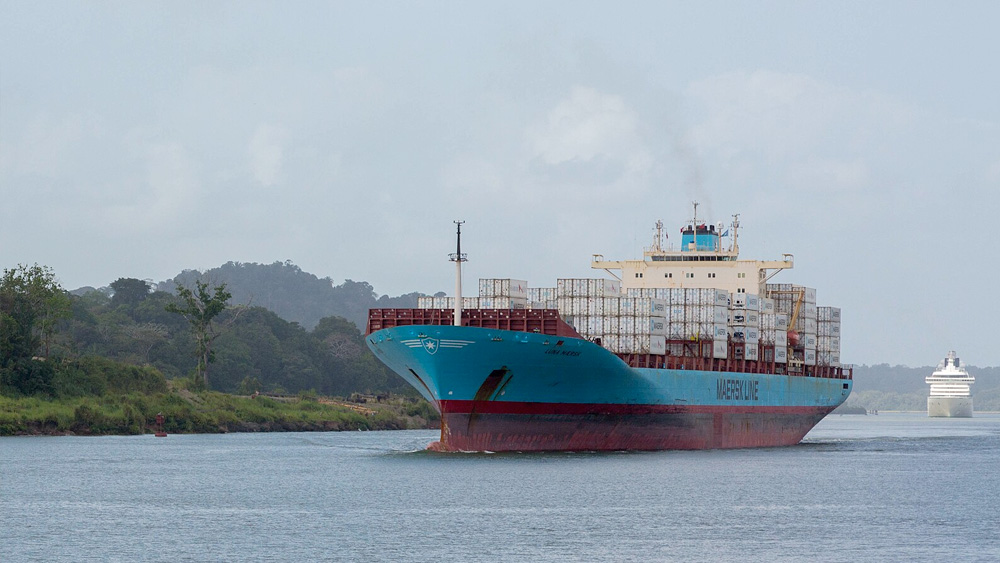
Above: Ships have been sailing with reduced cargo to sit higher in the water.
While most passages are booked in advance, the canal authorities reserve some slots which are auctioned off to the highest bidder. In November last year a tanker carrying liquefied natural gas paid nearly four million dollars on top of the usual USD $400,000 sailing fee to skip the queue.
So what are engineers doing to get the canal back to capacity? In September last year, the Canal Authorities gave their backing to a plan to create a new reservoir for the canal. The scheme was first devised in the late nineties and involves creating an artificial lake by damming the Indio river. Fresh water would then be supplied to Lake Gatun by an eight kilometre tunnel.
But it’s not done yet. A 2006 law which allowed the expansion of the canal’s locks banned the canal’s authority from constructing any more reservoirs. For the Indio river plan to go ahead that law would have to be overturned – and that won’t happen without a fight.
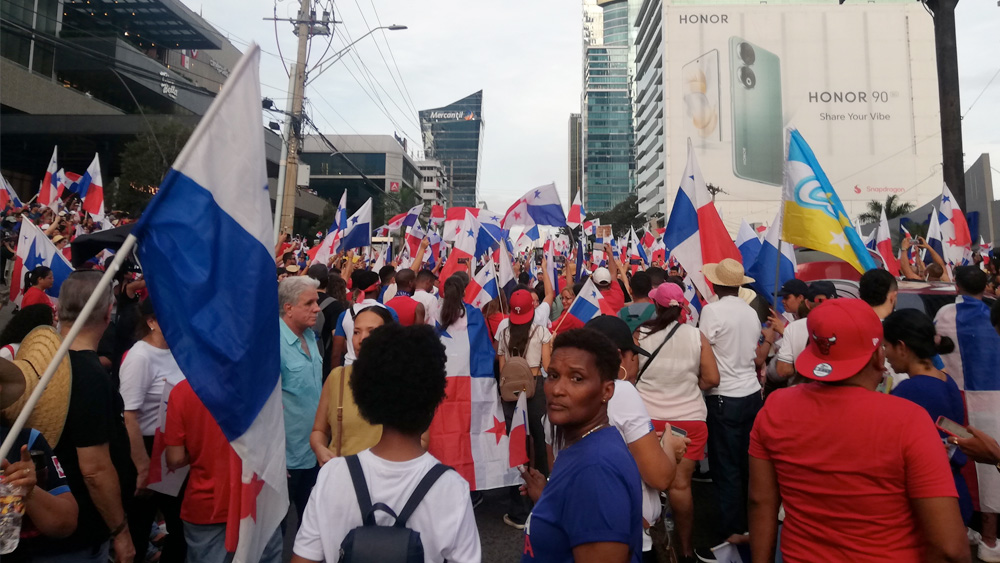
Above: Panama has been rocked by a series of protests in recent months.
For months, Panama has been rocked by a series of protests against a controversial new mining operation which is feared will have a massive impact on the country’s ecology and precarious supply of drinking water. Any plan for a new reservoir is likely to be met with similar opposition.
While Panama struggles to come up with solutions, elsewhere long forgotten schemes that could bypass the canal entirely are attracting attention. In May 2023, Nicaragua’s Foreign Minister, talked up the possibility of a partnership with Belarus to build a canal across his country.
This route was originally looked at by the US in the 1900s but abandoned in favour of the shorter option in Panama.
In 2022, Florida based company Zergratran launched an attempt to build a 130 kilometre long tunnel in neighbouring Colombia which would transport shipping containers coast to coast on maglev trains in just 30 minutes.
But the strongest challenger for the canal’s crown is Mexico's Interoceanic Corridor, which is already under construction. When completed, it will ferry freight and passengers 300 kilometres via road and rail links.
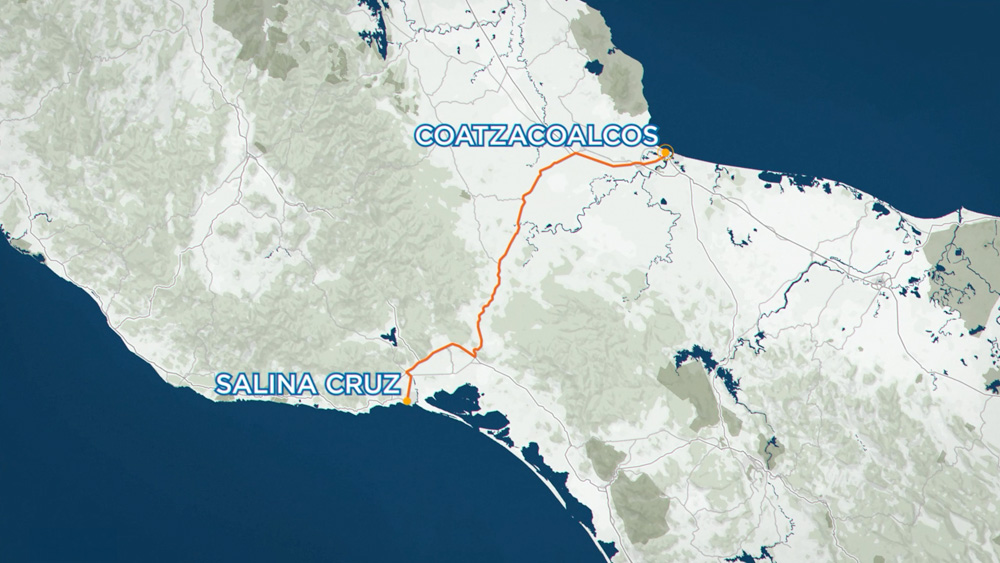
Above: Mexico’s Interoceanic Corridor is the strongest contender to replace the Panama Canal.
It will be years until we can say for certain what will happen to the canal, or trade in this part of the world. Whether the Panama canal retains its dominance in the global supply chain, or just becomes one of many options remains to be seen.
But if that does come to pass, then the golden age of one of the greatest engineering projects in the world will be firmly in the past.
Video narrated by Fred Mills. Additional footage and images courtesy of The Panama Canal, CBS, Mario Roberto Durán Ortiz, FDV, Vessel Finder, ABC News Live, Library of Congress, National Archives and Records Administration, Bibliothèque nationale de France, NASA, teleSUR, NBC and Zergatran.
We welcome you sharing our content to inspire others, but please be nice and play by our rules.
